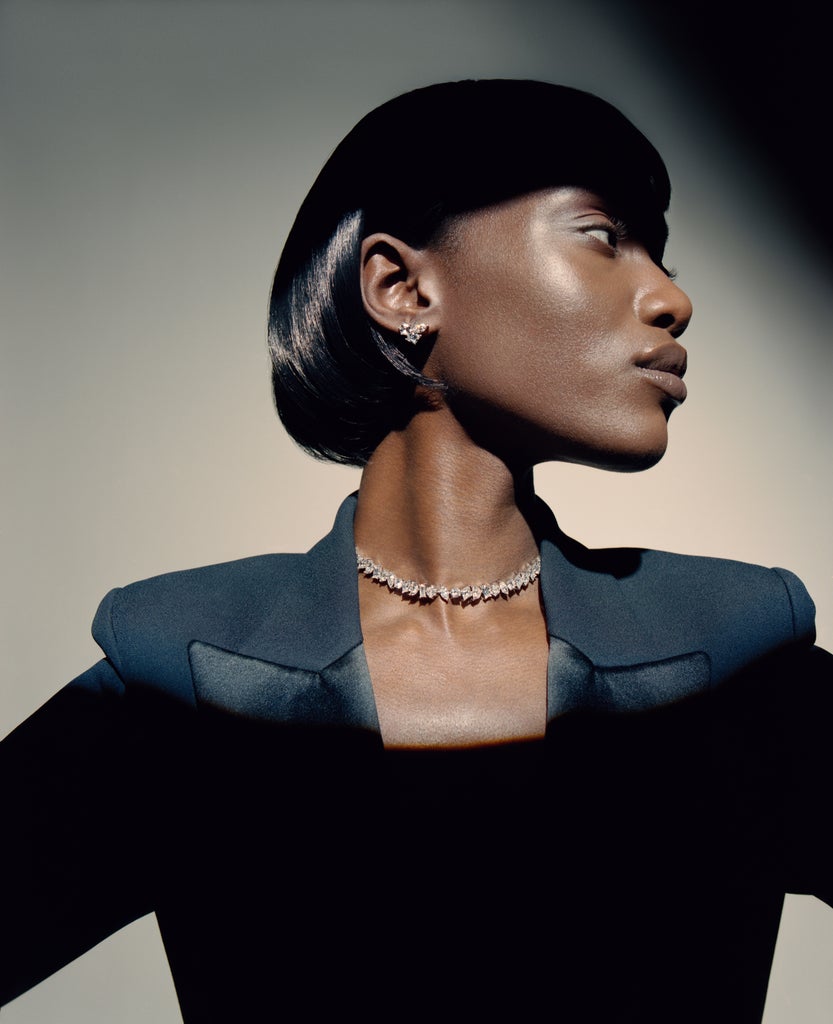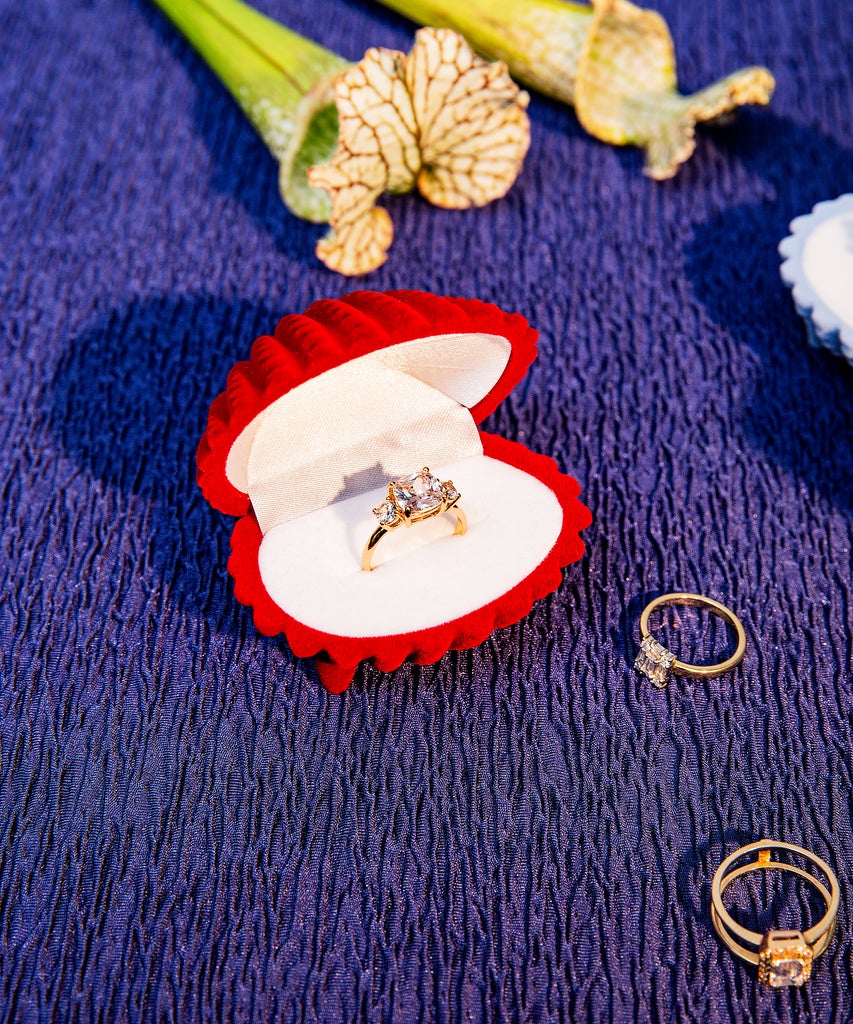Are Lab-Grown Diamonds The Gemstone Of The Future?
February 28, 2022BruceDayneFor more than 50 years, diamonds have been the ultimate symbol of love and the go-to gemstone for engagement rings. From songs proclaiming them “a girl’s best friend” to ad campaigns highlighting their eternal power, diamonds are firmly embedded in our culture. But as the lab-grown diamond industry continues to rise in popularity and produce cheaper and more sustainable alternatives to mined diamonds, is the gemstone really forever?
First things first: What is a lab-grown diamond? “A lab-grown diamond is optically, chemically, and physically identical to a natural diamond,” explains Melissa Cirvillaro, chief marketing officer of Lightbox, a subsidiary of De Beers Group that creates lab-grown diamonds, via email. “It is grown in a laboratory over a period of weeks rather than mined from the earth.” The process involves a diamond seed — a thin wafer of existing gemstone — as well as raw carbon and energy, which are then put under conditions that mimic the natural environment where a traditional diamond flourishes. Over the past few years, it’s becoming a popular choice among consumers.
According to Vogue Business, six to seven million carats of lab-grown diamonds were produced in 2020. While mined diamond production still outpaces the lab-grown industry — in comparison, over 110 million carats of diamonds were mined in 2020 — this sector is growing: According to Aether, a lab-grown diamond jewelry brand, the market has grown from 1% to 5% in the past three years alone. Since then, not only have new lab-grown brands launched, but heritage and mainstream brands like De Beers Group and Pandora have adopted lab-grown options into their offering as well.

Why are people foregoing diamonds?
While the earliest descriptions of diamonds were found in a Sanskrit manuscript dated to 320-296 BCE, the reason many people today own diamonds is thanks to modern-day marketing. Thanks to the legendary “A Diamond Is Forever” campaign launched in 1948, the De Beers company — one of the world’s biggest diamond miners, cutters, and sellers — successfully convinced the world that the only proper way to get engaged was with a diamond ring. This gave birth to the engagement ring industry as we know it today: From 1939 to 1979, wholesale diamond sales climbed in the country from $23 million to $2.1 billion.
Yet, as consumers have become more aware of the environmental and social impact of their fashion and shopping choices, the question of ethics surrounding diamonds has also been raised. Some argue that this industry has a severe environmental, economic, and social impact on communities where natural diamonds are mined, fueling armed conflicts. Two decades since governments worldwide signed the Kimberley Process, a certification created in 2003 with a mission to reduce the mining and exporting of “blood diamonds,” human rights violations are still being documented in countries where diamond mining occurs. Yet, many still argue that the economic and social benefits are bigger than it seems: the Natural Diamond Council says that over 80% of the net economic benefits of diamond production are retained within their originating countries.
Are lab-grown diamonds more sustainable?
There are also concerns when it comes to the environmental consequences of mining diamonds. While mined, diamonds require over 120 gallons of water for each carat, according to The Diamond Foundry, a company that produces synthetic diamonds, some lab-grown diamond companies use electricity and fossil fuels for production.
But many lab-grown-diamond companies are trying to extract energy and carbon from resources they claim are more sustainable. Marketed as the first-ever diamond made from air, Aether uses technology that captures carbon dioxide from the atmosphere to produce its diamonds. “We’re effectively reducing the carbon footprints of our customers and offsetting their impact,” the company’s CEO, Ryan Shearman, tells Refinery29. Aside from turning air into diamonds, Shearman says the company’s facilities and production also rely on clean energy from solar and wind power. Aether is also foregoing the use of other lab-grown diamonds for their seeds (ie. those thin diamond wafers) obtaining them instead from their own products, which they claim are “carbon negative.”
“Our goal is to be able to not just act as a source of diamond jewelry and have a positive impact for our customers, but also from a business-to-business standpoint to be able to offer diamond seeds out there in the marketplace,” Shearman says.
Los Angeles-based VRAI is also attempting to reduce the environmental impact of mined diamonds and its own lab-grown production. “We’ve been really focused on showing the beauty and the opportunity that lab-grown diamonds have by showcasing that you can have a luxury product that doesn’t compromise your ethics,” says Mona Akhavi, CEO of VRAI.
The brand, which is owned by The Diamond Foundry, uses hydropower from the Columbia River in Washington to extract the energy needed to grow their diamonds. (While hydropower can help offset the carbon footprint, the practice has received criticism from environmentalist groups, who have called out the construction of large dams for their harm to wild rivers and fish populations.)
While many lab-grown-diamond companies claim to be more sustainable than mined diamonds, there is no clear consensus on just how much energy lab-grown diamonds require: A 2011 report by the University of Virginia found that making lab-grown diamonds can use an estimated 20 kilowatt-hours per carat, while numbers provided to the trade publication JCK from “a veteran [diamond] grower” show that a single-stone high-pressure, high-temperature press — one of two types of machines used to grow diamonds — requires 175 to 225 kilowatt hours per rough carat (a similar amount of energy to what the average American household uses to power a home for seven days).

Are mined diamonds over?
Beyond ethics and sustainability, multiple reports conclude that diamonds have lost relevance with millennials and Gen Z who are less interested in engagement and marriage than generations before them. As society moves away from the idea of the nuclear family as its bedrock, so do the symbols that used to hold it together. In turn, diamond companies are adapting to fit changing social tides, turning to lab-grown diamonds for cheaper and more sustainable offerings. For proof, see Lightbox, which was founded by De Beers Group in 2018.
Then, there is the generational economic factor — millennials own just 5% of the wealth in the United States — which is makes the cheaper prices of lab-grown diamonds appealing to the demographic. For example, the cheapest available diamond stud earrings at De Beers are sold for $1,150 for a .14 carat diamond, while Lightbox offers a similar pair for $250 including a .25 carat diamond.
But while lab-grown diamonds are more economical, many argue that they won’t retain their value as much as mined diamonds, which are becoming more rare: Global supply of mined diamonds peaked in 2006 with 176 million carats mined, a level that, according to Bloomberg, will never be reached again. “Natural diamonds are a finite natural resource: the earth is not making any more. So, this rarity makes them a long-term store of value,” Sally Morrison, public relations director at Lightbox, wrote via email. Experts envisioned that, in 2021, there would be a 15 million carat deficit in the supply of mined diamonds, which could lead to a demand in lab-grown diamonds.
“Fewer and fewer mined diamonds will be available that are coming out of the ground, that means that the gap there can only be filled by lab-grown,” says Shearman.
Are mined diamonds forever? Maybe not. But thanks to the lab-grown, they will remain eternal.
Like what you see? How about some more R29 goodness, right here?
Beyoncé Channeled Audrey Hepburn In Tiffany's Ads
Are Lab-Grown Diamonds The Same As Natural Stones?
The Best Celebrity Engagement Rings Of 2020
DMTBeautySpot
via https://dmtbeautyspot.com
Frances Solá-Santiago, DMT.NEWS, DMT BeautySpot,


0 comments